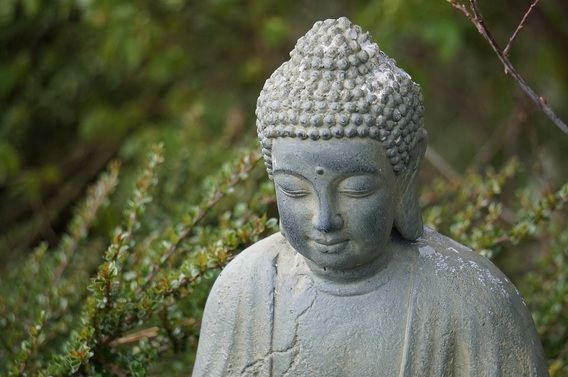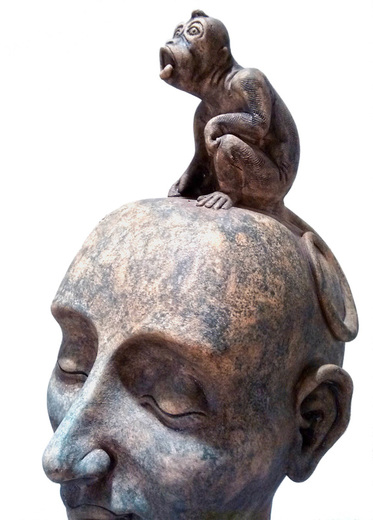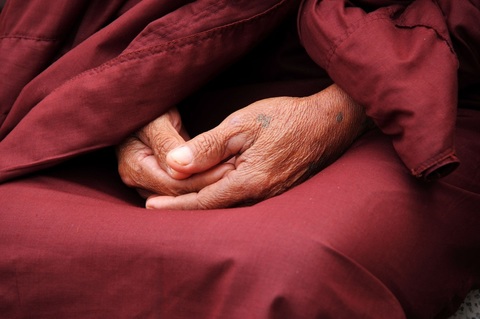|
When we consider health, the first thing many people do is to go and seek the counsel and advice of a professional. Usually this involves a medicine or treatment and sometimes a suggestion to stop drinking coffee or eating certain foods and to get more exercise. I hope that in the coming years health professionals do not stop there. I have met many people recovering from serious health conditions that tell me the most important part of their healing process was learning meditation. If you study yoga or martial arts, meditation is par for the course. If you are a conscientious vegan or vegetarian likely you have either tried it or currently practice it. In the West, meditation is no longer the practice of monks in distant countries; everyone has access to learn and practice it. Often it helps to find a mentor to guide us into a suitable practice that fits with our unique circumstance. If we are on a healing path, we need to consider meditation as part of that process. And in a holistic practice we must understand that the act of healing goes beyond the actions of the professionals and the action of medicaments, we must be part of this process, we must also take action ourselves for our self! I have always appreciated the Tibetan Buddhist approach to such things so I will share that with you. I found a good description from the book Cutting Through Spiritual Materialism by Chögyam Trungpa on how to approach a healthy meditation practice. This offers an excellent introduction into meditation practice and a good reminder for those already practicing. The basis is the idea of "letting be." We can experience that there is a sane, awake quality within us that manifests only in the absence of struggle. This is a reason to meditate although we are not trying hard to do it. Proper meditation is not a lazy, trance like state of mind nor is it mental gymnastics. We don't have to lose our intention but neither do we work hard to achieve something. It is a way of dealing however, with our neurotic states of mind, which have energy, speed and a certain pattern. "The practice of meditation involves letting be—trying to go with the pattern, trying to go with the energy and speed. In this way we learn how to deal with these factors, how to relate with them, not in the sense of causing them to mature in the way we would like, but in the sense of knowing them for what they are and working with their patterns." The idea is like how a musician might tune his guitar. It is not ideal to make the strings too tight or too loose. In meditation, we are not wanting to impose anything too forcefully on the mind, nor to let it wander. It is a letting the mind be in a very open way, and feeling the flow of energy without trying to subdue it or letting it get out of control. You want to go with the energy pattern of mind. This is proper meditation practice. This gives us a needed break from our usual thinking patterns, that are either too manipulative and imposing, or running amok and uncontrolled. What we are usually observing in this form of meditation is the ego's discursive thoughts which are continually running through our minds. This is the concept of the monkey mind defined as a mind that is unsettled, restless, capricious, inconstant, confused, indecisive and uncontrollable. It will be there regardless and the absence of it is not a sign of a successful attempt at meditating! It is important to reiterate that this approach to meditation is not a means to 'kill' the ego or to suppress it. We often forget the ego's role after reading modern, self-help rhetoric. The ego is always seeking to identify itself, associate itself and maintain a specific idea of itself. It basically translates as the sense of self and anchors us in the faculty of self-awareness. In Buddhist terms, the ego maintains our sense that we are a solid, continuous self and this is to shield us from the threatening and confusing aspects of our existence. I like the metaphor I heard the other day, that if we didn't need the ego to define us as a separate self, then walking across the street would be extremely dangerous since we would see no problem being one with a moving truck. So step one is really accepting that the ego is part of us and is here to stay!
So back to the letting be, the more we generate thoughts, the busier we are mentally and the more convinced we can be of our materially based existence, this is a big struggle. The ego wants to activate thoughts, to overlap thoughts so nothing can be perceived beyond them. Our current society in the West is overburdened with tools that help us continue these thoughts; Facebook, film and television programs, long work hours, materialistic pursuits like shopping, making to do lists, constant busyness. We rarely pause to find stillness. "In true meditation there is no ambition to stir up thoughts, nor is there an ambition to suppress them. They are just allowed to occur spontaneously and become an expression of basic sanity. They become the expression of the precision and the clarity of the awakened state of mind." A good analogy here is that the gaps between thoughts are the empty blue sky, and the thoughts are clouds. The clouds will pass and reappear, we can only wait and be observant and some days will be like July summers and other like November storms, that is just how it will be. The same with emotions, in meditation we neither encourage or suppress them. By gentle observation we can let them be as they are without them being forced or manipulated and in seeing them clearly in this way they will no longer tend to entertain or distract us and can instead be e-motions, energy in motion that is inexhaustible and fulfills egoless action. By this examination of the thoughts, emotions, and other activities of the mind, the Buddha found that there is no need to struggle to prove our existence or to struggle to be free, for the absence of struggle is a form of freedom. These gaps between thoughts are where we find our sane, awake quality and the observing is a way to truly know our unique self. Meditation is a place where we return to our true nature, where we can easily tune into the whole and re-tune our body's innate healthy states both mentally and physically. And it can be done for no cost but time and no effort but patience.
0 Comments
|
Lauren TrimbleHomeopath and Holistic Practitioner. Archives
October 2022
|




